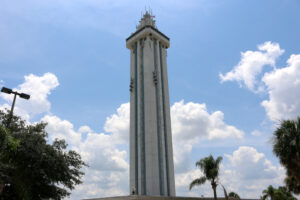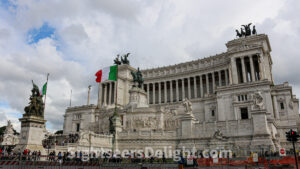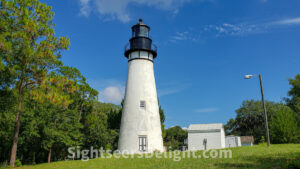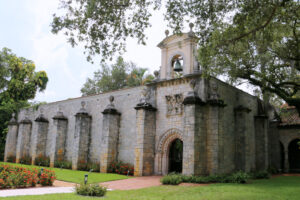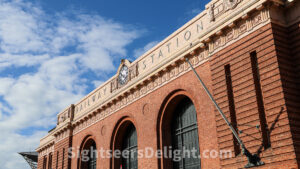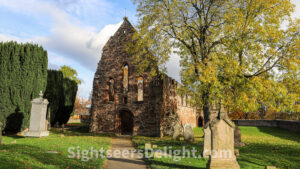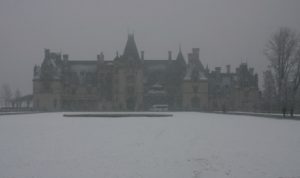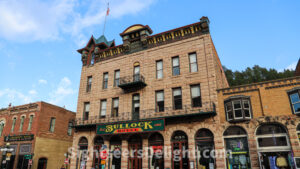The Clermont Citrus Tower first opened to visitors in 1956. It took 13 months, roughly $300,000, five million pounds of concrete and 149,000 pounds of reinforced steel to build the tower. Counting its antenna, the tower reaches over 500 feet above sea level, making it the highest observation point in the Sunshine State. At one point, more than 500,000 people visited the tower every year. However, the 1964 extension of the Florida Turnpike provided a waste route for motorists and the tower’s popular among travelers began to wane. Then, that roadside oddity called Walt Disney World opened. The rest, as they say, is history.
34711
Hearst named his mansion La Cuesta Enchantada (or The Enchanted Hill), but it is commonly referred to as Hearst Castle. The Casa Grande that stands atop the hillside, the symbol of the mansion, features two towers were inspired by the Cathedral of Santa Maria la Mayor in Ronda, Spain. The Castle is filled with Hearst’s collection of treasures from around the world, ranging from medieval tapestries to Renaissance furniture to 19th century sculptures. But, perhaps the most intriguing element of the mansion is Neptune Pool , which features the façade of an ancient Roman temple as its centerpiece.
93452
Formerly the Hiroshima Prefecture Industrial Promotion Hall, this building was completed in April 1915, and was located near the bomb’s hypocenter. It is one of the few buildings to survive the blast. Historic photographs of the city show a landscape flattened by the blast, with just a few structures still standing — one being the shell of the Industrial Promotion Hall. But, the building, which has not changed significantly since the bombing, is just one of a few important landmarks dedicated to Aug. 6, 1945.
The Altare della Patria (or Altar of the Fatherland) is perhaps better known as the Monumento Nazionale a Vittorio Emanuele II (or the National Monument to Victor Emmanuel II). Many also call it the Wedding Cake. Sitting between Piazza Venezia and the Capitoline Hill, it was built to honor Victor Emmanuel II, the first king of a unified Italy. The monument is also the location of the Tomb of the Unknown Soldier and features an eternal flame and the museum of Italian Unification.
The Ancient Spanish Monastery, officially St. Bernard de Clairvaux Church, was originally built in the Spanish town of Sacramenia in Segovia in the 12th century and named Santa María la Real. It was closed some time between 1836 and 1840 during the reign of Isabella II of Spain and as a result of the Ecclesiastical Confiscations of Mendizábal. William Randolph Hearst purchased the structure in 1925 and was subsequently dismantled and shipped to the United States. However, as a result of an outbreak of hoof and mouth disease in Segovia, the 11,000 crates containing the historic monastery building were quarantined in New York. Though he planned to relocate it to his Hearst Castle in San Simeon, because of Hearst’s financial difficulties, the building remained in storage in New York. Raymond Moss and William Edgemon purchased the building in 1952, a year after Hearst died. The building was re-assembled on a plant nursery north of Miami.
33160
The Auckland Railway Station is the former main railway station of Auckland. Opened in 1930 on Beach Road, it replaced the previous Queen Street railway terminus which is approximately where the current main railway station, Britomart is located. The 1930 station was the third station to serve as the rail terminus for Auckland, and remained the sole station serving the CBD until its closure in July 2003, when Britomart became the new terminus.
Beauly Priory, in the Beauly village of the Highland area, was a Valliscaulian monastic community that was probably founded in 1230. The monastery’s founder is unknown for certain, as different sources give different names, such as Alexander II of Scotland, John Byset, or both. The French monks and Bisset, a nearby landowner, had a strong French-speaking presence, hence the name of the location and the river: “beau lieu” (“beautiful place”), which later passed into English. The priory’s ruins, protected as a scheduled monument, are one of the top attractions in Inverness.
George Vanderbilt began building the 250-room Biltmore House in Asheville, North Carolina, in 1889, a year after he traveled to the city on a family vacation with his mother. Roughly 1,000 people worked on the project, ranging from local laborers to internationally known artists. Indiana limestone, Italian marble and other supplies were shipped into Asheville by rail. Vanderbilt built a private railroad track from the village depot to the construction site, while an on-site kiln produced up to 32,000 bricks daily, and a woodworking factory supplied oak and walnut for the house’s floors and walls. The house was completed in 1895 and opened to the public in March 1930.
28803
The Bullock Hotel is a historic landmark located at the corner of Wall Street and Main Street in Deadwood, South Dakota. It was built by Seth Bullock and his business partner Sol Star around 1895 for $40,000. The hotel is the oldest in Deadwood and has 28 of its original 63 rooms and a casino and restaurant. Seth Bullock began construction on the hotel shortly after the devastating Deadwood fire of 1894, which destroyed the original two-story wood-frame building. The hotel was designed in an “Italianate” and Victorian style, with the first floor featuring a grand hotel lobby, a large dining room, and several offices. The second and third stories held 63 luxury sleeping rooms with baths down the halls and two large banks of skylights for natural lighting. All rooms were furnished with iron and brass beds and oak furnishings.
57732

